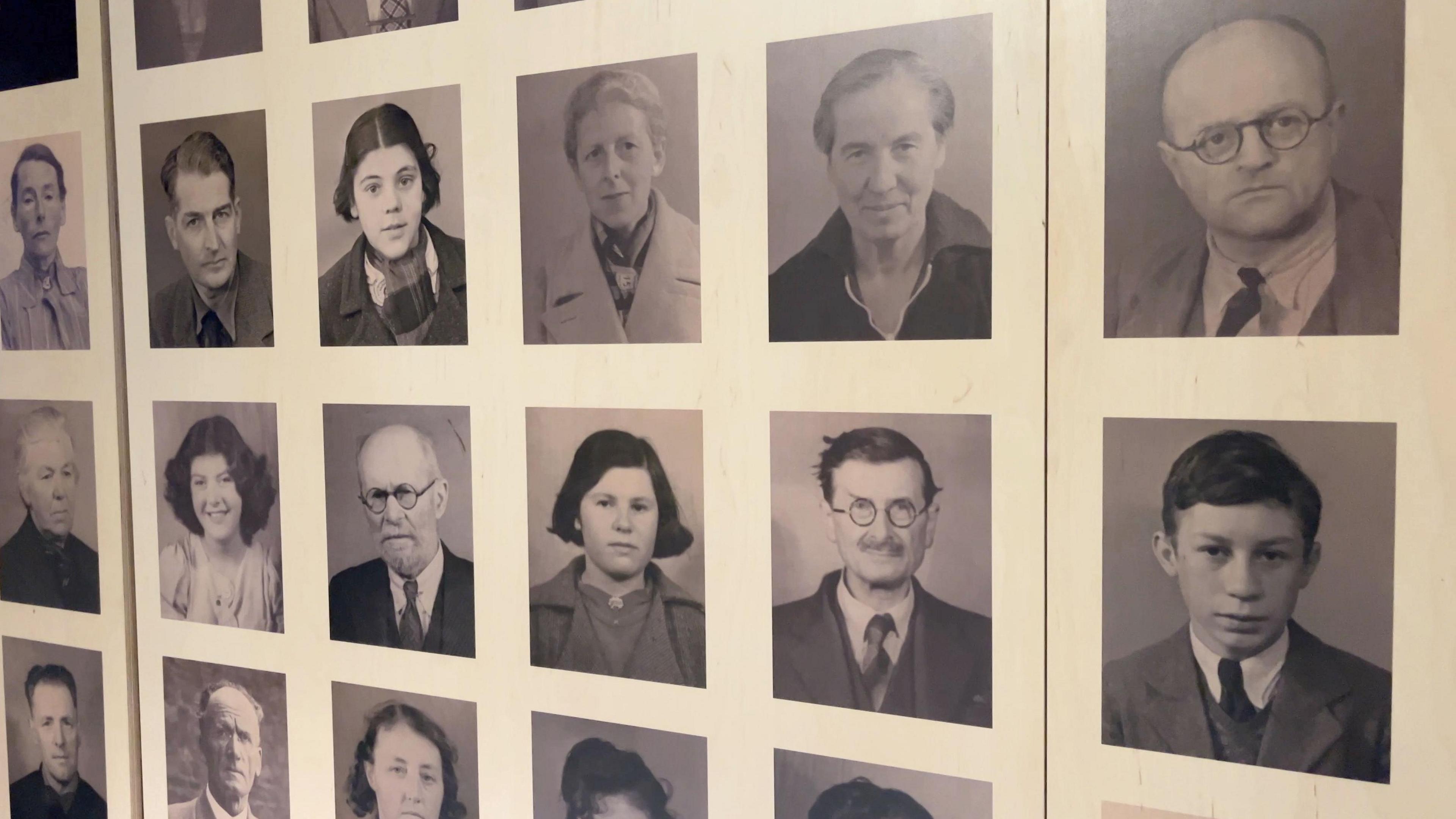The concrete reminders of five years of occupation
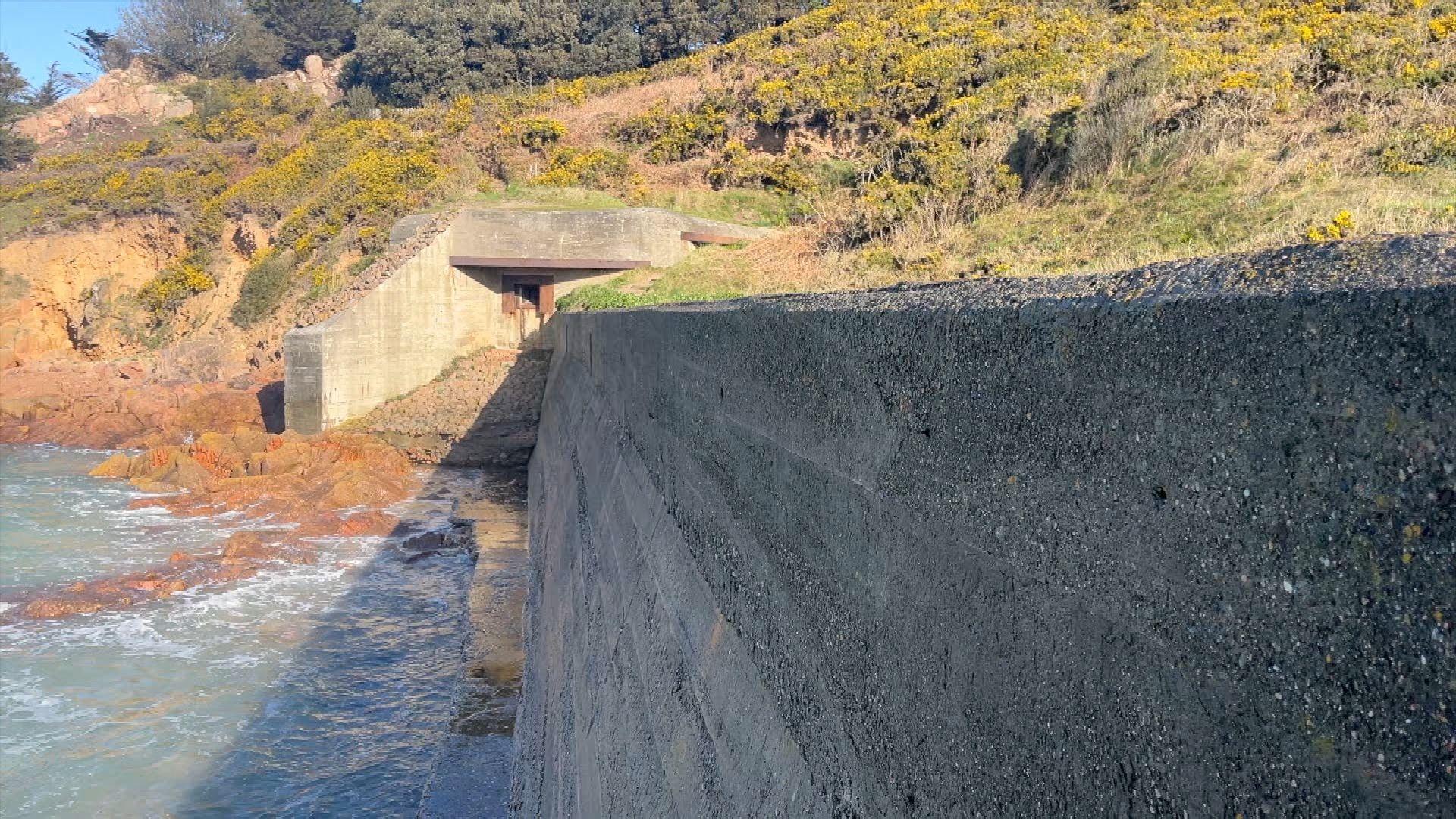
Hitler ordered the construction of hundreds of bunkers, walls, tunnels and other defences
- Published
When the Germans occupied the Channel Islands in World War Two, they set about turning them into impregnable fortresses.
Hitler imagined that the British would want to retake them as soon as possible, so he ordered the construction of hundreds of bunkers, walls, tunnels and other defences.
Some of those were destroyed after the war, but many remain and are still being used today.
The Germans realised that the sandy beaches on Jersey's south and west coasts were perfect for landing an invasion force with landing ships able to carry tanks and other vehicles right up to the shore.
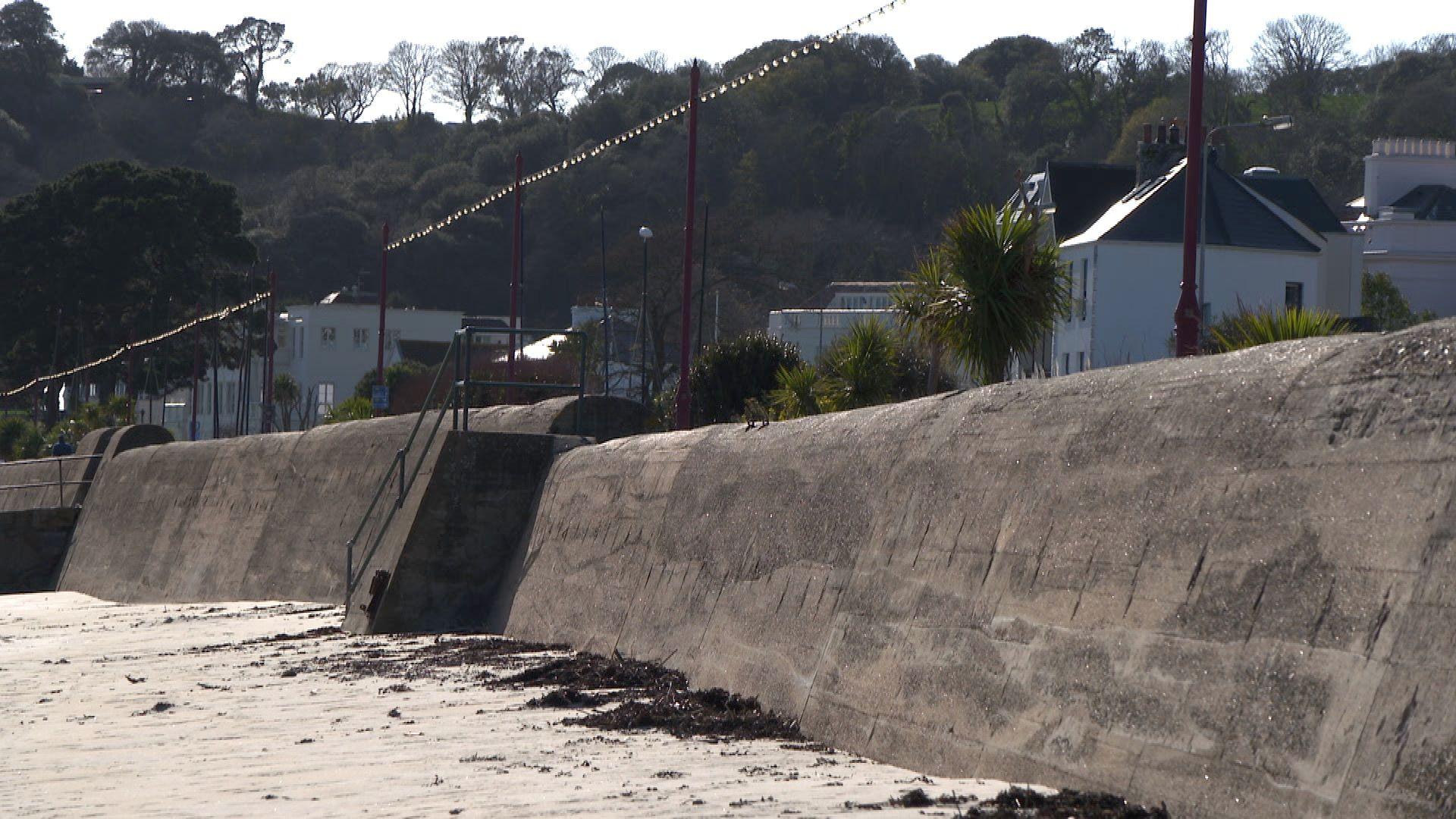
Slave workers built the sea defences
While there were already some barriers - built against the sea - the Germans wanted a continuous wall all along St Aubin's Bay and St Ouen's Bay that would be proof against tanks and turn the beaches into killing zones raked by gunfire from their bunkers.
In 1942, they brought hundreds of slave and forced workers to the island to expand the defences - many which dated to the Napoleonic Wars.
All along the coast they laboured with concrete and steel to form walls that, 80 years later, protect Jersey from the storms that batter the island every year.
The height and solidity of the wall in St Aubin's Bay in particular has stood up to all but the worst of them, albeit with regular repairs.
It means islanders can have the cycle track and the dual carriageway and secure homes along the south coast.
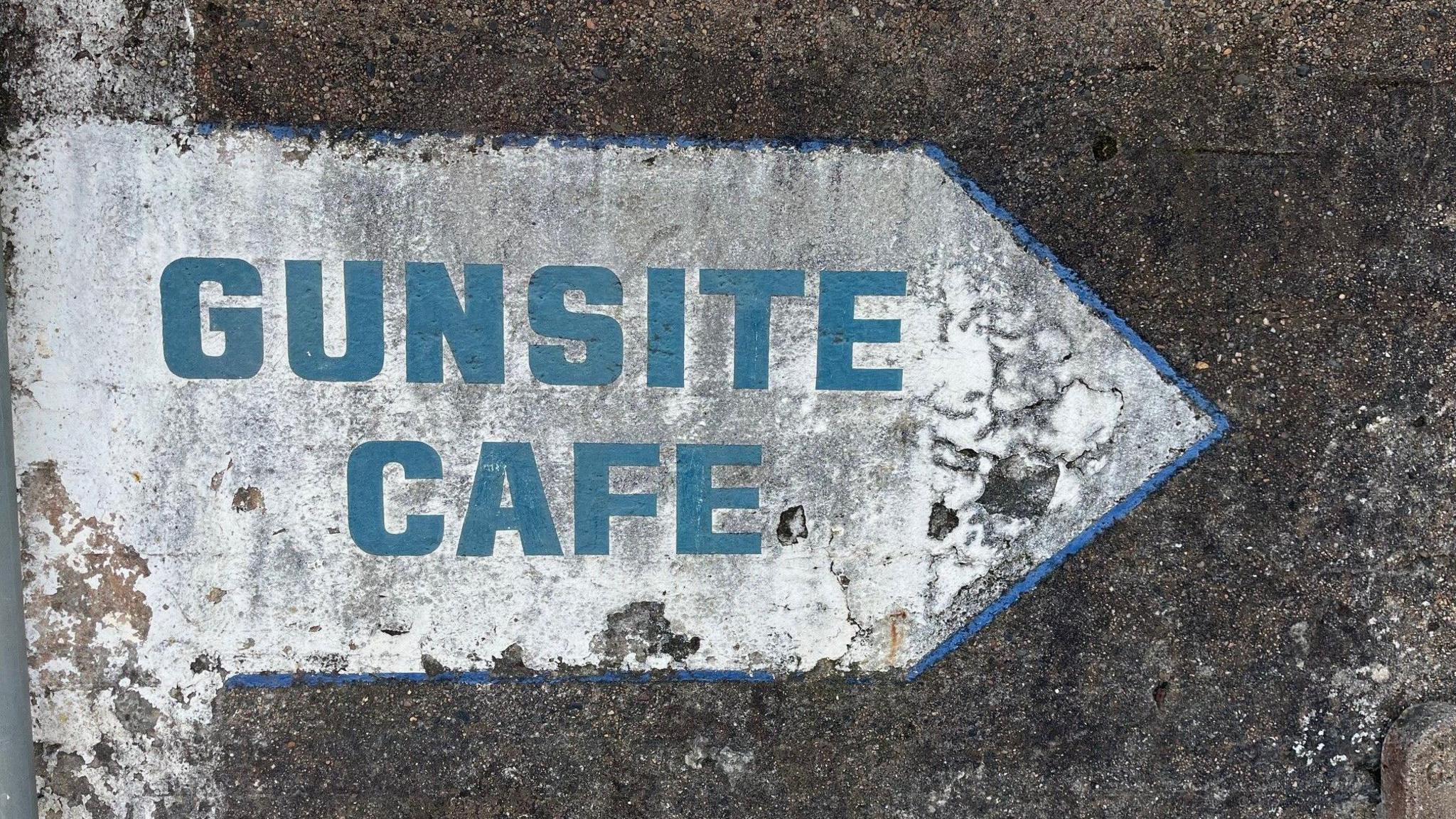
Sea defences built in World War Two have protected the island
"There's no doubt that the island would have had to have spent tens of millions of pounds on putting up these kinds of defences, particularly with the rise in sea levels," said Constable Simon Crowcroft, Assistant Minister for Infrastructure.
Beyond the walls are other structures that have been repurposed - such as the Gunsite Cafe, Faulkner's Fisheries, the car repair garage at Sandybrook, and the restored German bakery at Beaumont which is now The Pavilions block of flats.
Many bunkers are used for storage and recreation across the island.
Of course all of these structures came at a terrible cost in human suffering.
The workers who built them had been transported hundreds of miles from home in awful conditions.
They were worked hard, to the point of exhaustion, and faced beatings and other punishments for even minor offences.
"It involved unknown number of forced labourers and we remember their sacrifice on Liberation Day itself in the afternoon when we go to the Slave Workers Memorial," said Crowcroft.
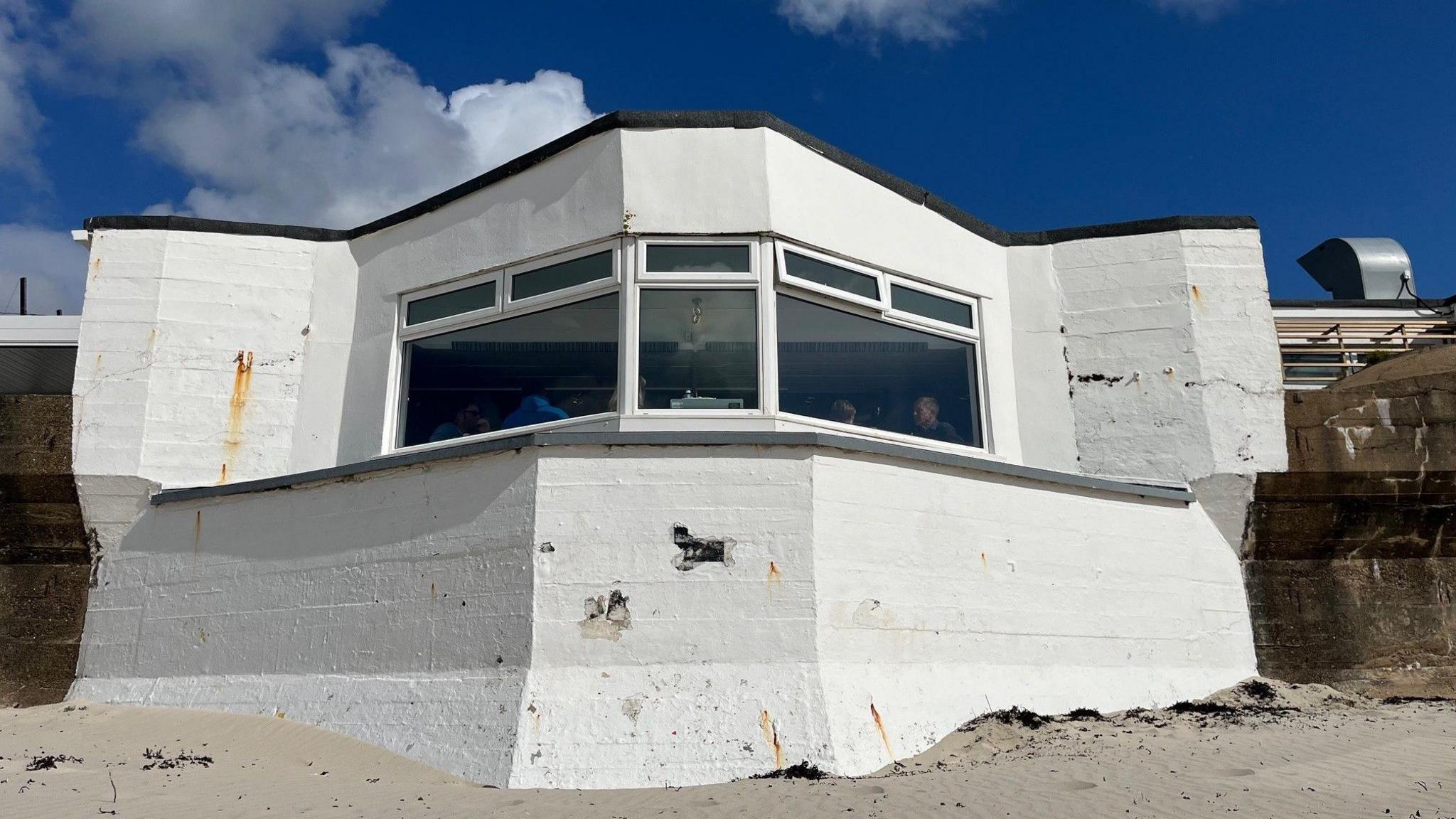
A lookout tower and gun emplacement have been converted into accommodation
"We're stuck with these things, it's a legacy," said Matthew Costard, of the Channel Islands Occupation Society.
"And I think that if they can find a new lease of life, in a useful role, then it preserves those buildings and helps to tell the story.
"And it gives something back to the infrastructure of the island."
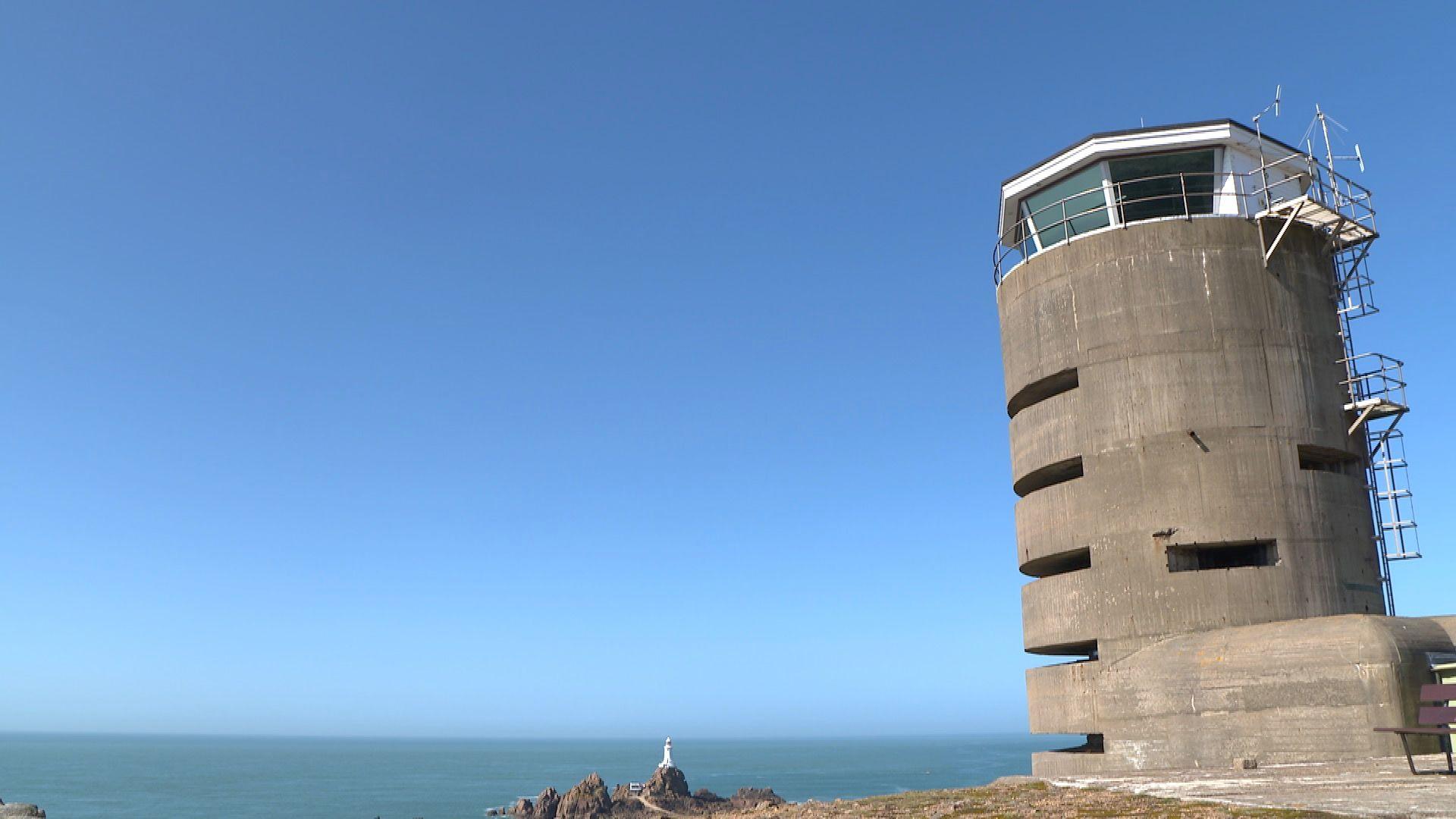
The work on the observation tower means it is now providing income for Jersey Heritage
And there is one place in the island which has been turned from an ugly blot on the landscape into one of its most desirable locations for a scenic break for islanders and visitors.
The former German observation tower and gun emplacement at Corbiere is a grey anomaly against the blue sky and green cliffs, but Jersey Heritage has spent thousands transforming its interior into accommodation that sleeps six people.
The tower, at the south-western point of Jersey, has a 90% occupancy rate, making it one of the island's most successful overnight spots.
"I think this is one of the best examples of a building in Jersey that has been repurposed from its original intended use to a really popular destination for locals and tourists," said Michael Bee of Jersey Heritage.
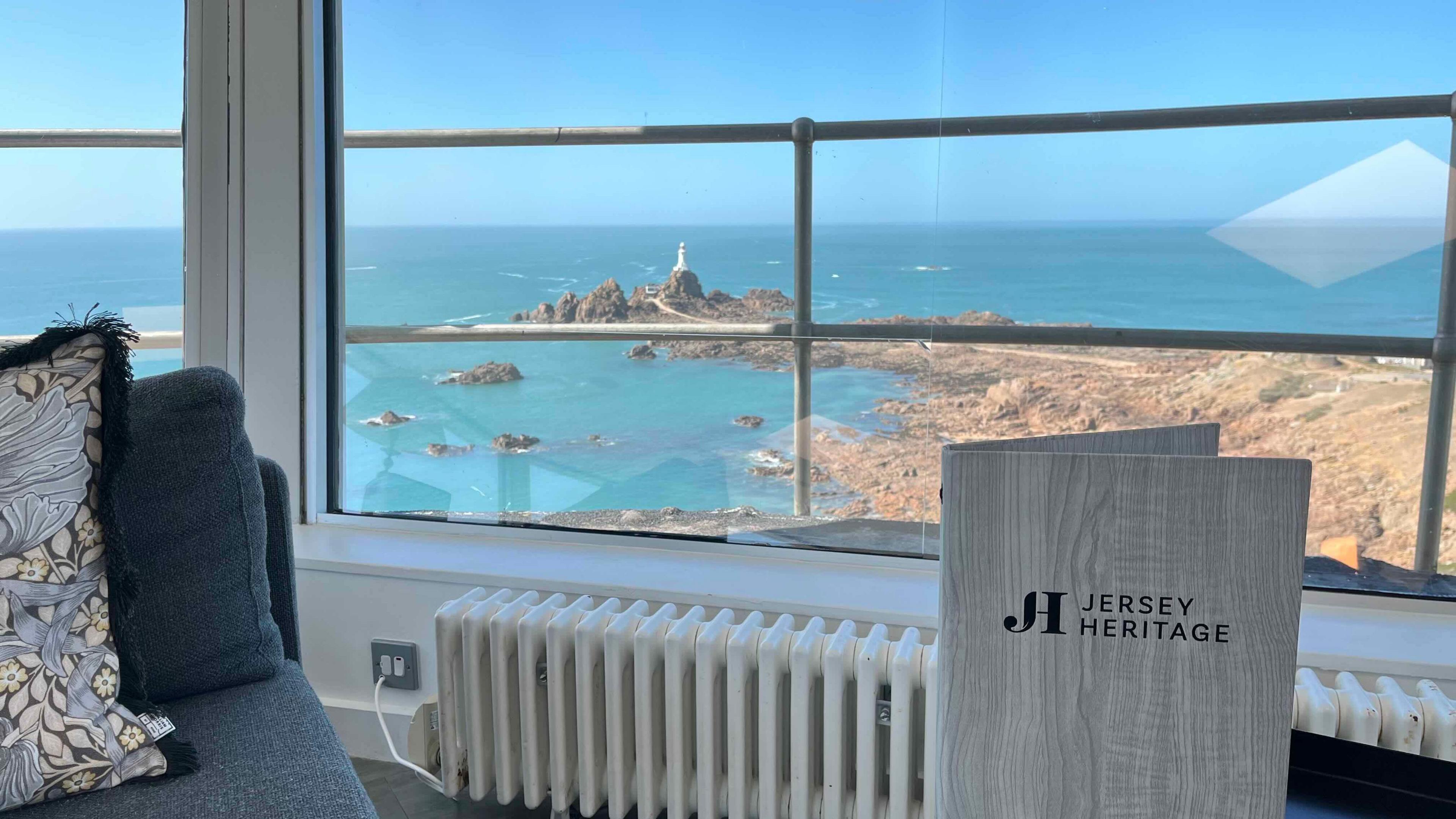
The view from the lookout tower and gun emplacement at Corbiere
Follow BBC Jersey on X, external and Facebook, external. Send your story ideas to channel.islands@bbc.co.uk, external.
Related topics
- Published2 May
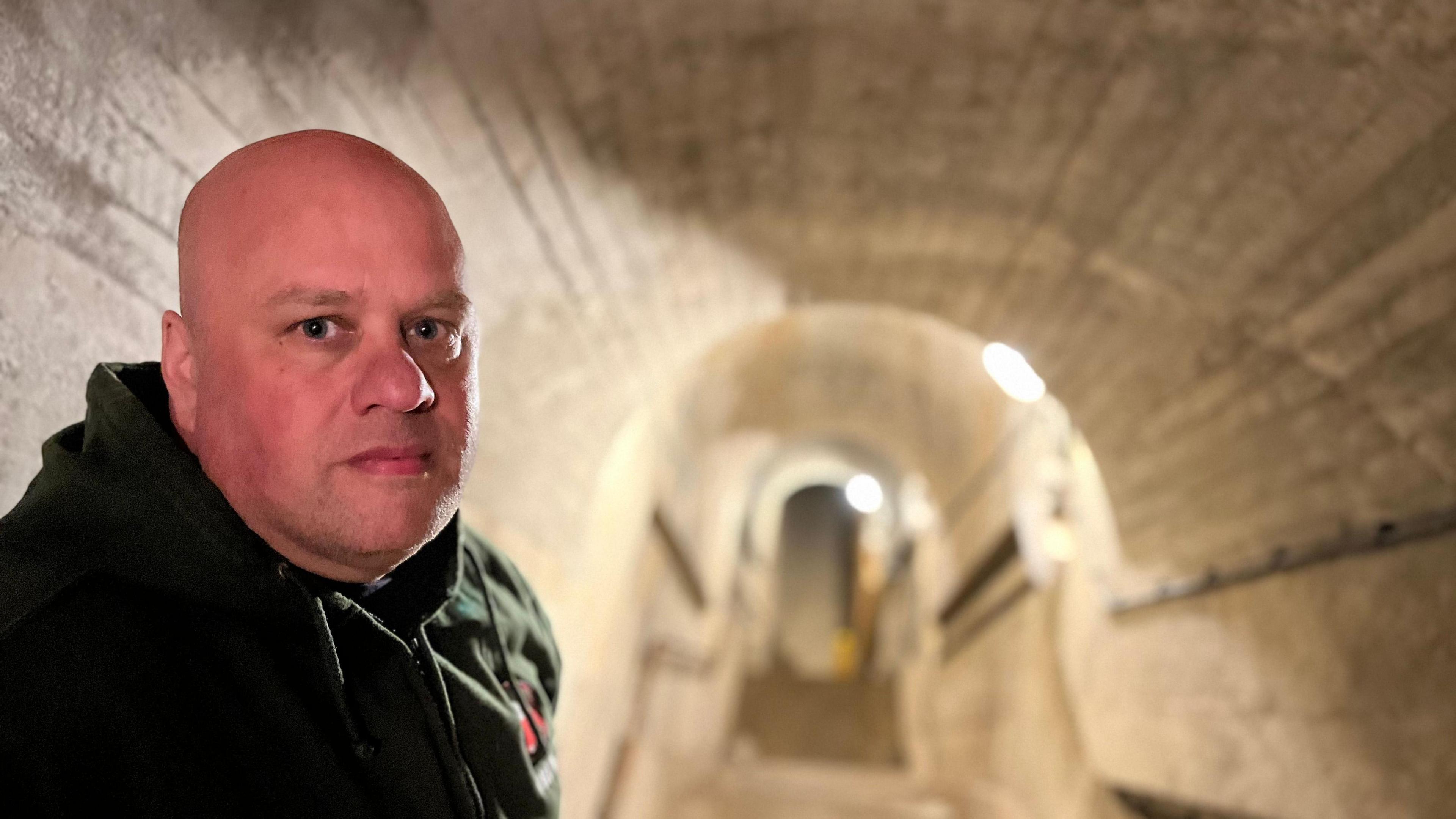
- Published23 February 2020
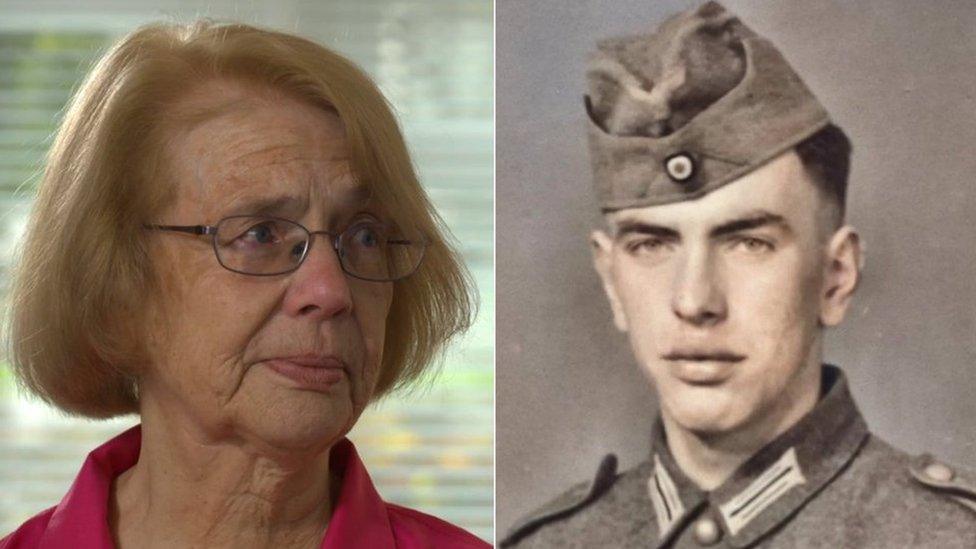
- Published1 January
